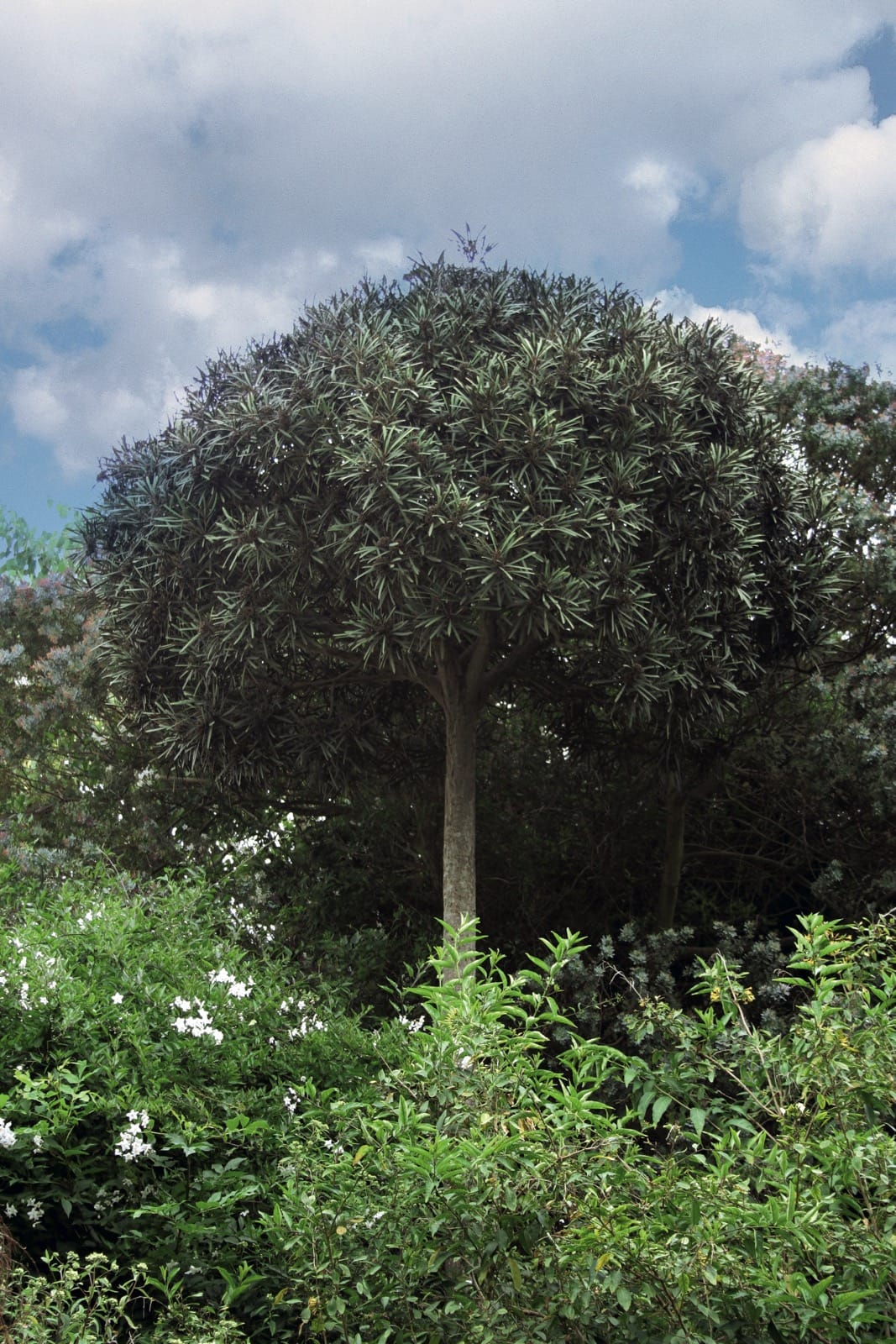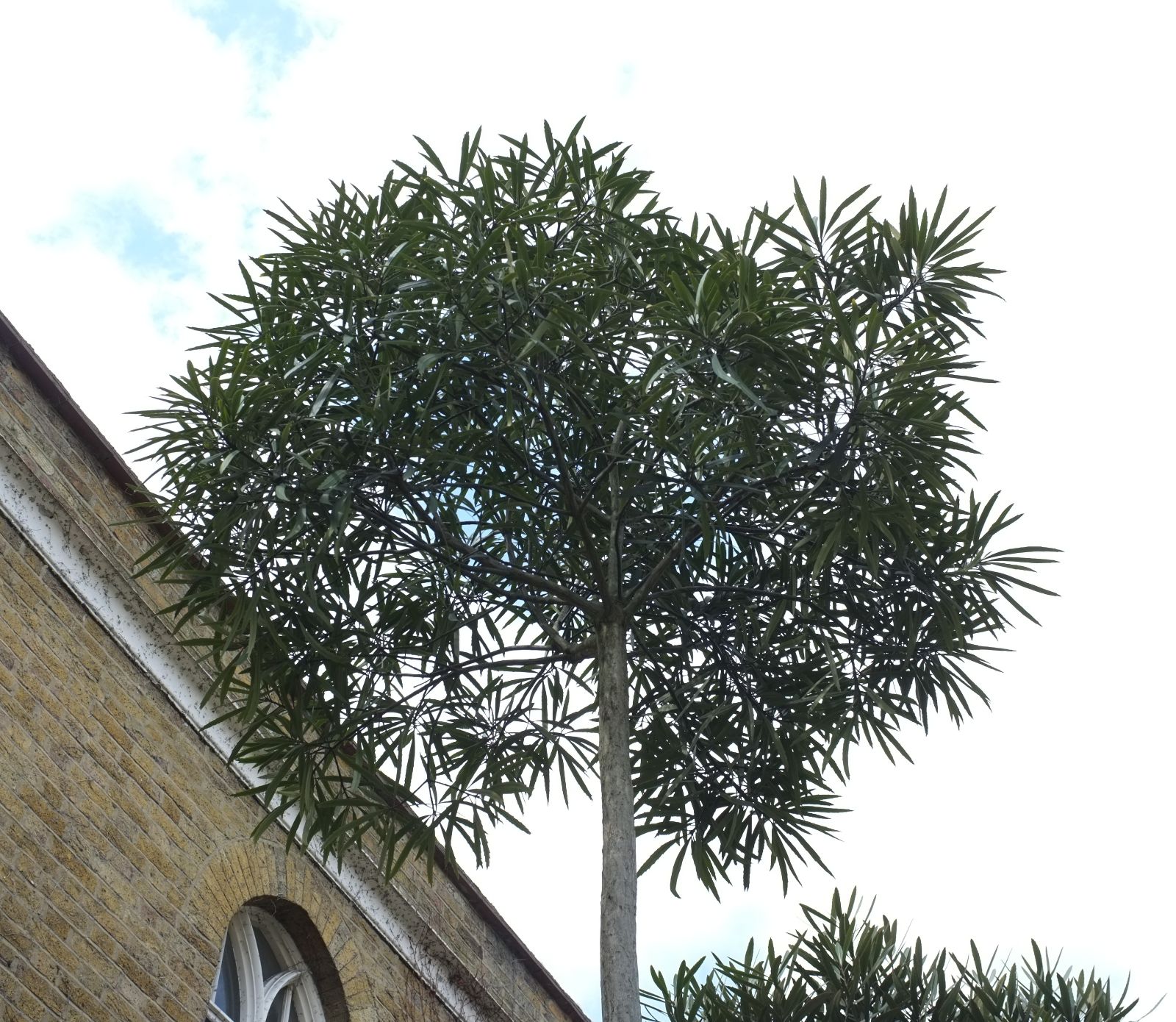Pseudopanax
Credits
Article from Bean's Trees and Shrubs Hardy in the British Isles
Article from New Trees by John Grimshaw & Ross Bayton
Recommended citation
'Pseudopanax' from the website Trees and Shrubs Online (treesandshrubsonline.
Family
- Araliaceae
Common Names
- Lancewoods
Pseudopanax in its former sense included plants from New Zealand, Tasmania, New Caledonia and Chile, but with the transfer of some species to Neopanax, Polyscias Forster & Forster. f. and Raukaua Seem. it has been reduced to seven species, which are endemic to New Zealand and its adjacent islands (Frodin et al. 2003). The lancewoods are small to medium-sized trees or shrubs. The adult leaves are compound and palmate, though reduction in the number of leaflets occurs, and some species have one or three leaflets only. Heteroblasty, where different leaf-forms are produced in different age groups, is common in the genus (for example, P. crassifolius and P. ferox). The juvenile leaves are simple, linear, serrate and strongly reflexed. They encircle the trunk and are thought to have provided protection from herbivory by the now-extinct moas (Frodin et al. 2003). An array of intermediate leaf-forms can be found in wild specimens, and particularly on stump shoots and hybrids. Some species of Pseudopanax are grown almost entirely for their architectural juvenile leaves, but these are only produced for a limited period (10–20 years in P. crassifolius) before the development of adult leaves (Cave & Paddison 1999). Pseudopanax species are dioecious, with flowers in simple or compound umbels. The individual flowers are 5-merous and rather insignificant, and the fruit is fleshy (Allan 1961, Salmon 1996).
With the increasing popularity of impressive foliage plants, coinciding with a warming climate, Pseudopanax has come to the fore, and juvenile plants of P. crassifolius and P. ferox are now frequently to be found in nurseries and garden centres, at least in Britain. Their principal attraction is the juvenile foliage, which provides a very dramatic shape in the garden. It is noticeable, though, that the numbers of individuals offered are not matched by numbers of plants to be seen in gardens, and one has to suspect a fairly high mortality rate. As with many slightly marginal plants it is probably worth keeping them in a pot until they have developed somewhat in size and solidity. A warm, sheltered but sunny site in a mild climate seems to be the ideal. They can be propagated from seed, which is probably the best method for the relatives of P. crassifolius, or from cuttings in the case of the multistemmed shrubby species.
In addition to the two species described below, P. chathamicus Kirk, from the Chatham Islands and known in Maori as Hoho, is also offered commercially in the United Kingdom. It resembles P. crassifolius but the juvenile leaves are less strongly deflexed and more similar to those of the adult phase: a number of New Zealand plants have vicariants on the Chatham Islands in which protective adaptations, so common on the mainland, are moderated or absent – perhaps due to the absence of moas from these islands in the past (Atkinson & Greenwood 1989, Greenwood 1992).
Bean’s Trees and Shrubs
Pseudopanax
A small genus of evergreen trees and shrubs, natives of New Zealand, Tasmania, New Caledonia, China, and Chile. Leaves digitately compound, trifoliolate or reduced to a single leaflet. Some New Zealand species go through a juvenile phase in which the leaves are markedly different from those of adult plants; the most notable instance – P. crassifolius – is treated below. Flowers in compound umbels, or in umbels arranged in the form of a panicle or raceme; pedicels jointed. Calyx entire or toothed. Petals five, valvate. Stamens five. Ovary with two to five locules. Styles two to five, more or less connate. Fruit fleshy, subglobose or compressed.
Pseudopanax, as here understood, includes species previously included in Nothopanax and Neopanax (see: W. R. Philipson, N.Z. Journ. Bot., Vol. III (1965), pp. 333–8; H. H. Allan, Fl. N.Z., Vol. I (1961), p. 433).


